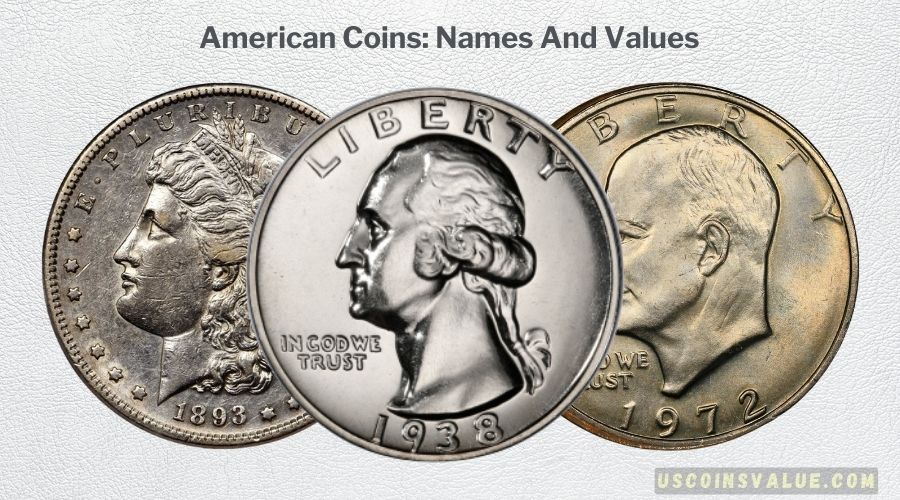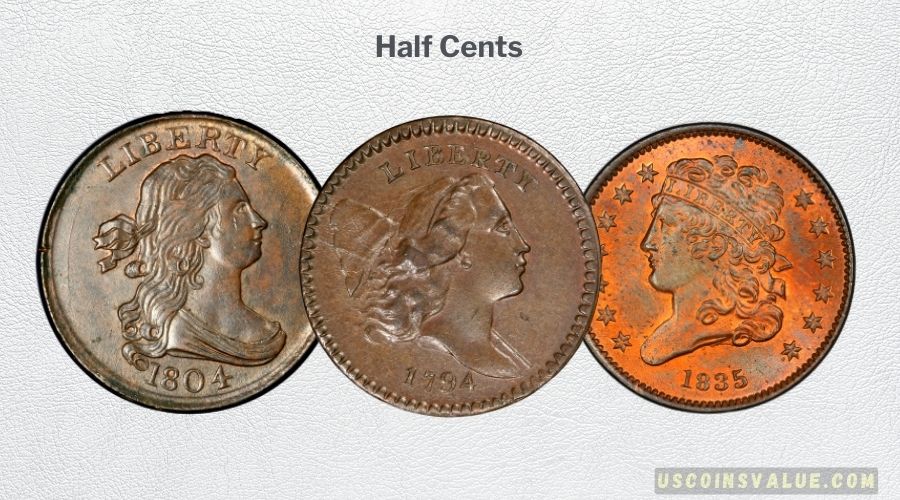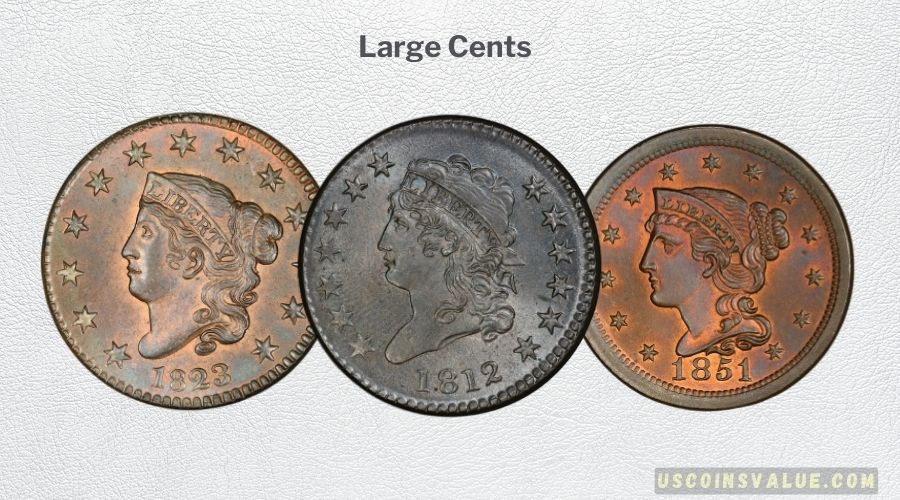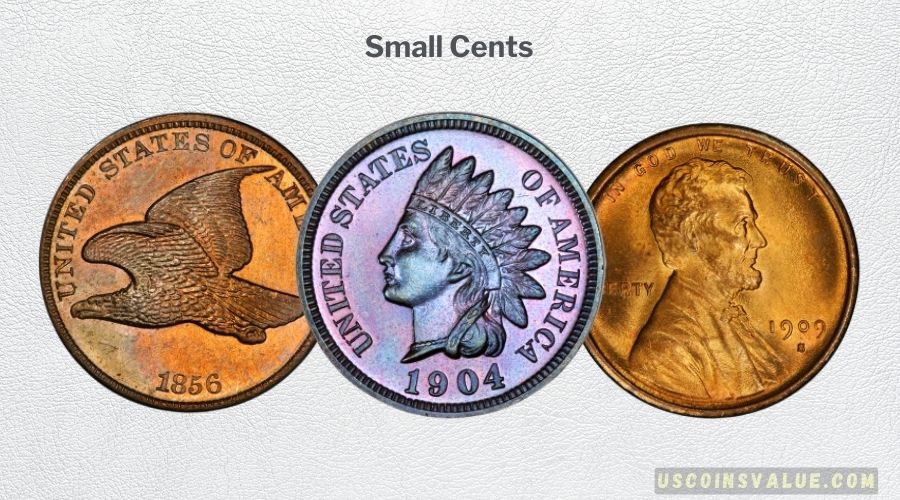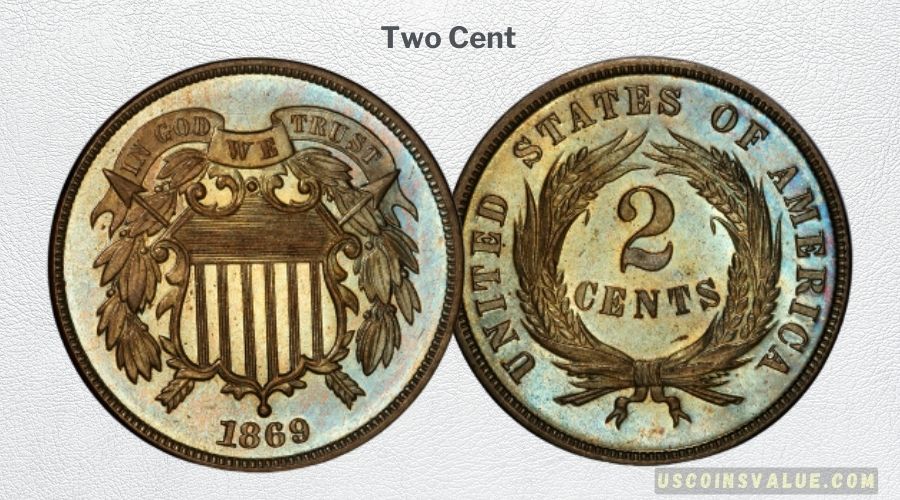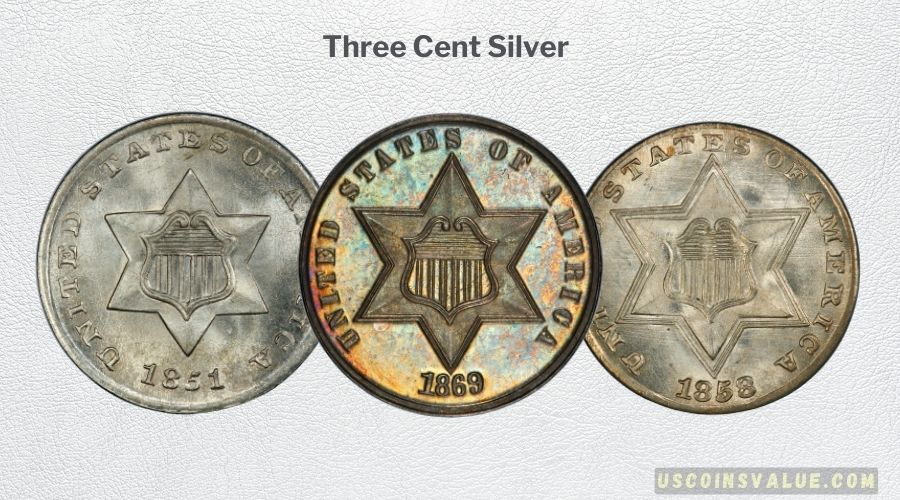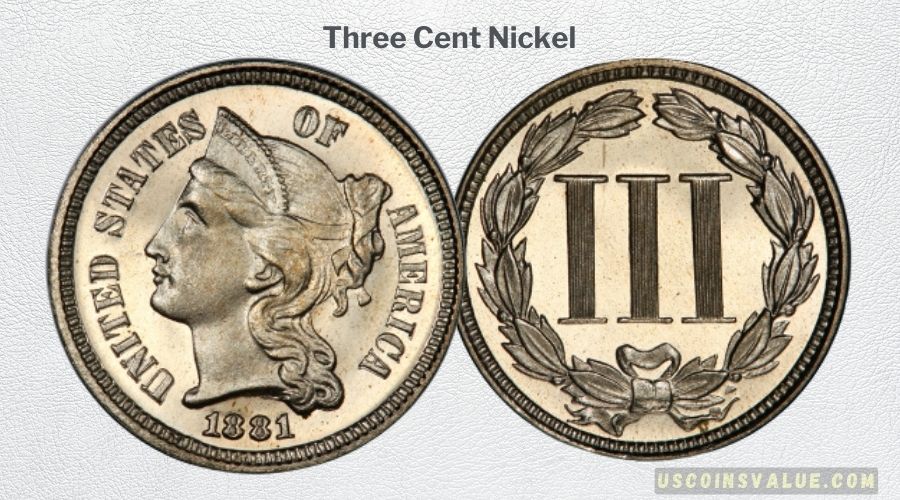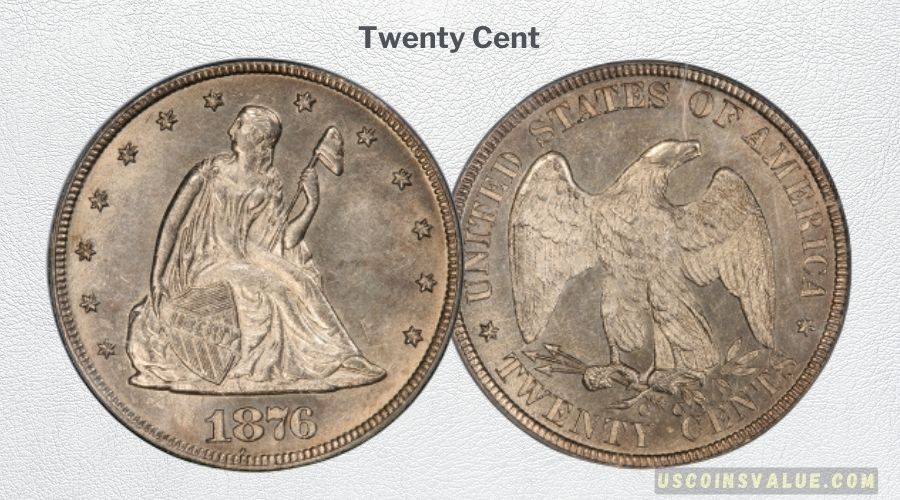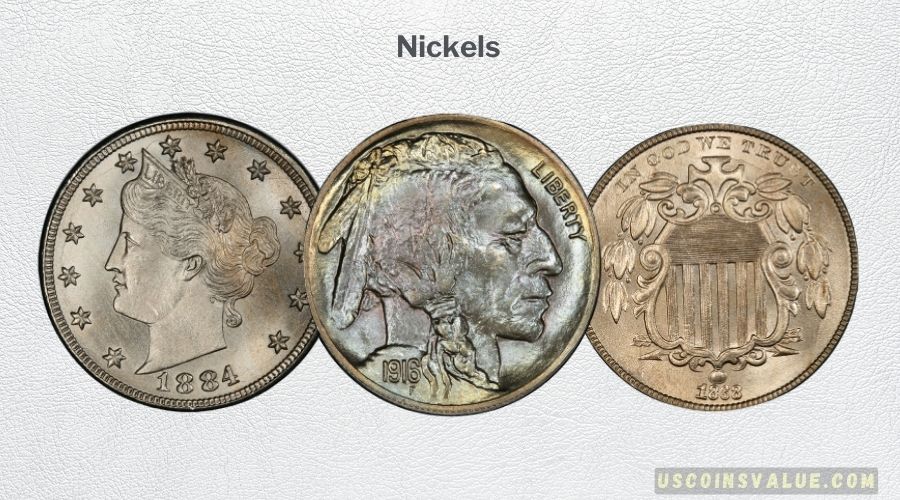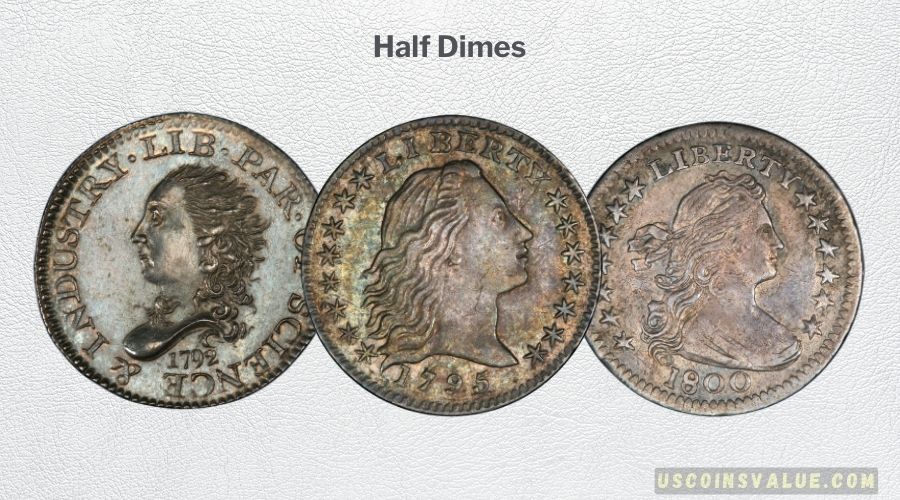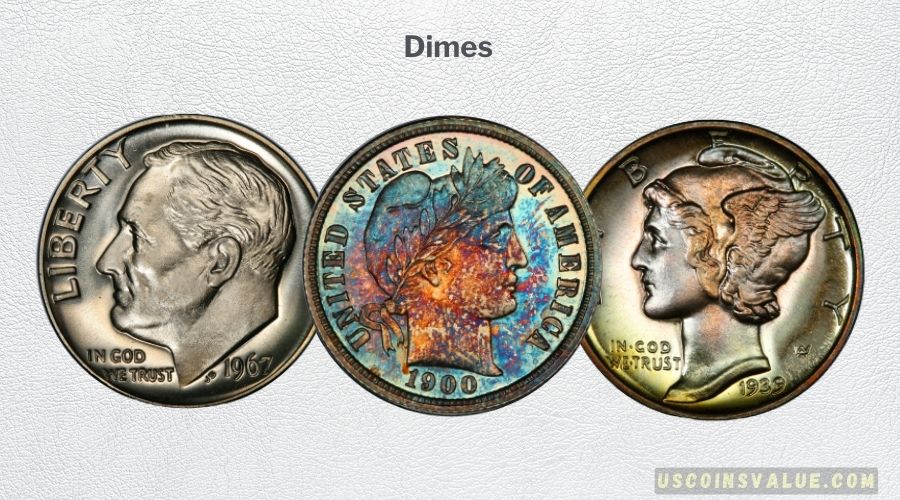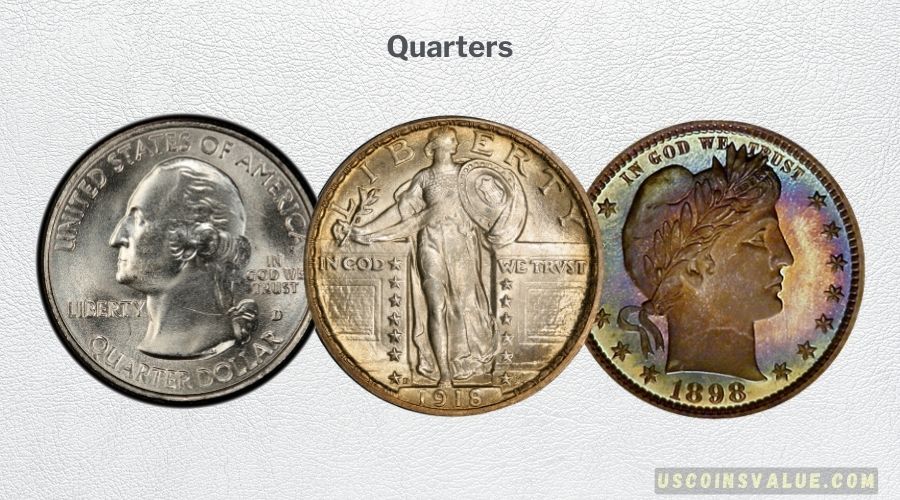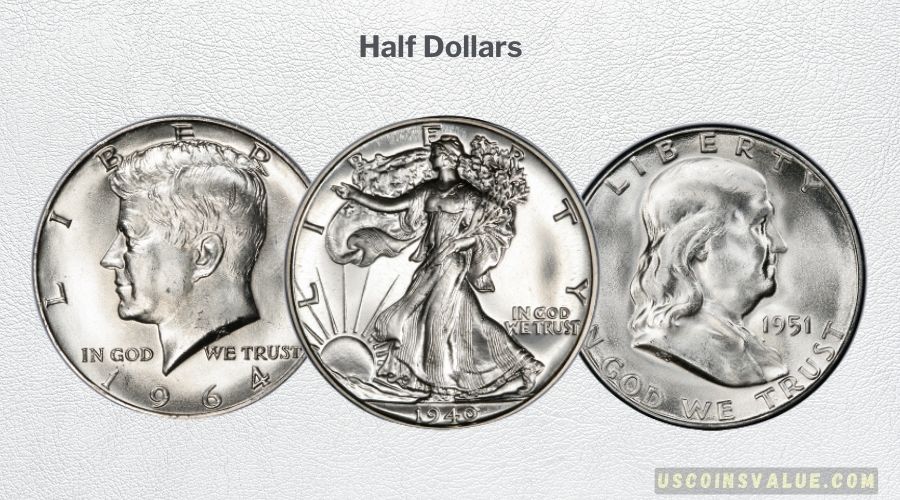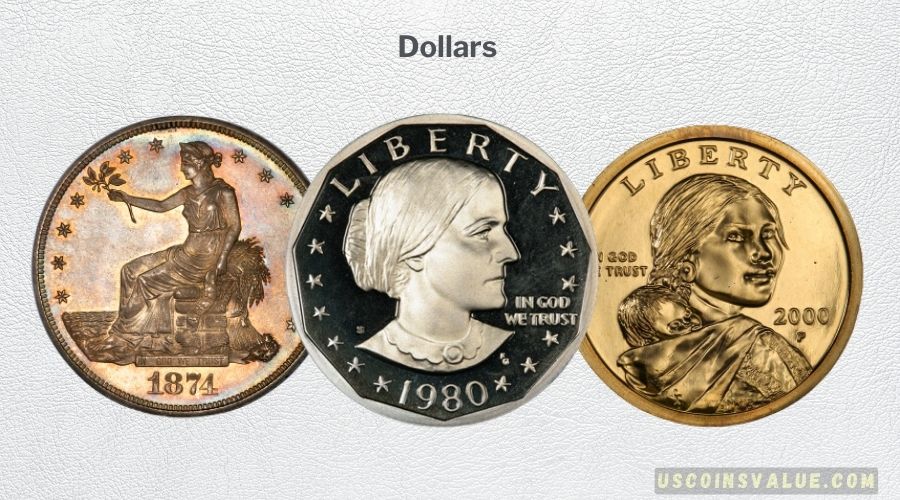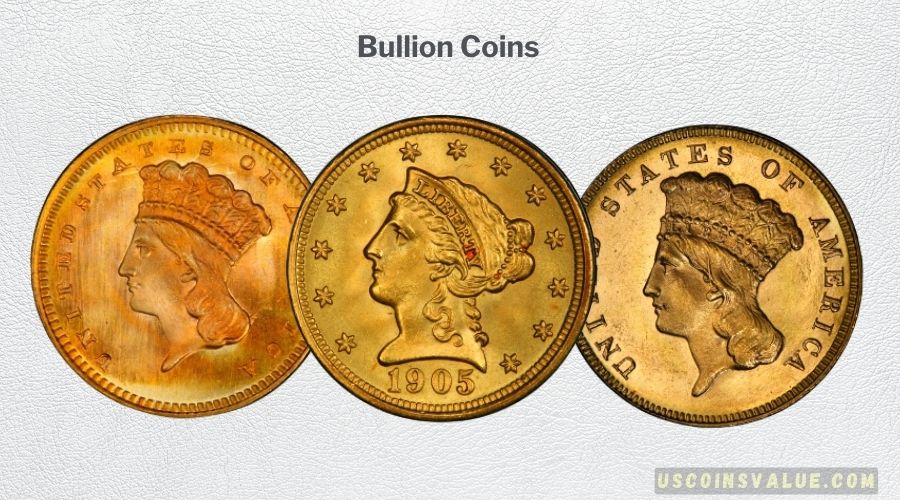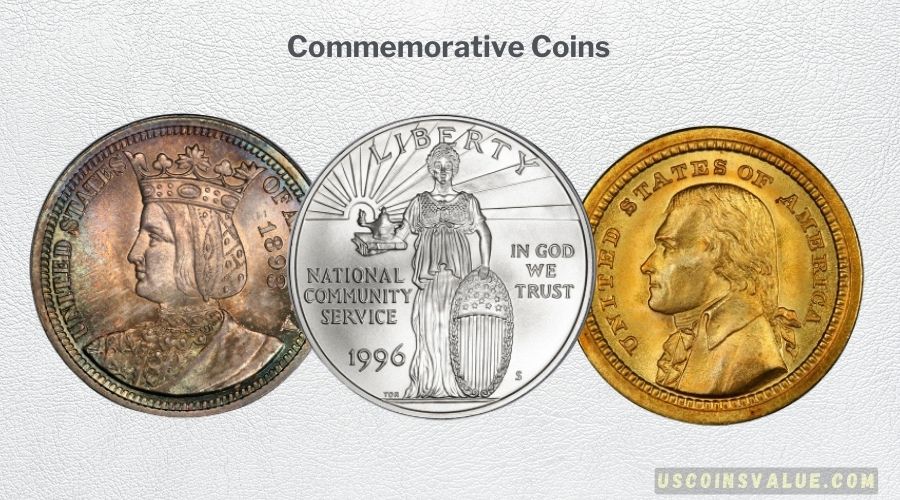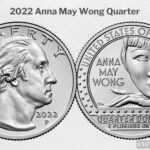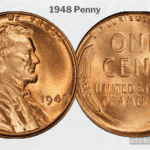Did you know 15 different types of coins have been produced since the establishment of the United States Mint in 1792? You may be wondering, aren’t there just four types of U.S. coins? There are more than four because the U.S. Mint produces regular business circulating coins, commemorative sets, and bullion coins.
Also, some coins that used to be in circulation are now obsolete for various monetary and economic reasons. Every coin ever made is valuable in one form or another in the world of numismatics and coin collecting. If you want to be a pro collector or make a small fortune from coin collecting, you will have to familiarize yourself with every type of American coin that has ever existed.
This article will give you an overview of everything you need to know about American coins, from classic U.S. coins to modern varieties. Learn their names, face values, history, significance, designs, and compositions.
Summary Of American Coins Names And Values
| Type of American Coin | Years Issued |
| 1. Half Cent | 1793 – 1857 |
| 2. Large Cent | 1793 – 1857 |
| 3. Small Cent | 1856 – Present |
| 4. Two Cent | 1864 – 1873 |
| 5. Three Cent Silver | 1851 – 1873 |
| 6. Three Cent Nickel | 1865 – 1889 |
| 7. Twenty Cent | 1875 – 1878 |
| 8. Nickel | 1866 – Present |
| 9. Half Dime | 1794 – 1873 |
| 10. Dime | 1796 – Present |
| 11. Quarter | 1796 – Present |
| 12. Half Dollar | 1794 – Present |
| 13. Dollar | 1794 – Present |
| 14. Bullion Coins | 1795 – Present |
| 15. Commemorative Coins | 1848 – Present |
What Are The U.S. Coins Called?
We refer to our coins by their names rather than their value. The coin names the USA uses include penny(one cent- 1C), nickel (five-cent – 5C), dime (ten cent– 10C), quarter (25 cent– 25C), half dollar (fifty cent– 50C), and the dollar ($1). Different variations exist, like the vintage half-dime and half-cent.
So, how many types of coins are there? Many may say four since only four (4) types of U.S. coins are used regularly in transactions today. However, the total number of U.S. coins is 15.
There are different variants, alterations, designs, errors, and updates in these 15 types, creating hundreds of coin varieties since the inception of the U.S. Mint System.
History Of The Types Of Coins In the USA
The United States government officially began producing its coins with the passage of the Coinage Act of 1792, which established the U.S. Mint system and authorized the production of several coin denominations.
The first mint facility was established in Philadelphia, and the first coins were produced in 1793, including:
- Silver: half-dime, dime, quarter, half-dollar, and dollar.
- Gold: quarter eagle, half eagle, and eagle.
- Copper: cent and half-cent.
Throughout history, many changes have occurred, and the first one was the choice to make copper coins instead of silver or gold due to the abundance of the former. This change went even further in 1933 when gold coinage stopped due to the Great Depression.
For over 150 years, circulating coins (regular business coins used in transactions) only featured Lady Liberty on the obverse (heads) design. This is because Congress decided to uphold the concept of liberty rather than a person.
It was not until 1909 when Lady Liberty was replaced on the penny with Abraham Lincoln. The change was made to honor the 100th anniversary of Lincoln’s birth. However, the coin was liked by many Americans, which prompted Congress to keep up with the tradition to date.
Many more changes have occurred, making each alteration a gold mine for collectors. This prompted the U.S. Mint to make many types of coins, including commemorative coins, to celebrate unique events and sites.
Despite all these changes, the U.S. Mint ensured to stick to a handful of coin types:
The 15 Types Of Coins In The U.S. – With Pictures
Each type of coin mentioned below is filled with different varieties, from metal composition changes to design changes, wartime changes, honorary changes, and so much more.
1. Half Cent (1793 – 1857)
Introduced in 1793, the half-cent is the smallest denomination (1/200th of a dollar) minted by the U.S. The Philadelphia Mint was the only facility during the run of this series.
Production ceased in 1857, but before then, it underwent various changes, creating different varieties:
- Liberty Cap – Type 1, 2 & 3 (1793 – 1797)
- Draped Bust – (1800 – 1808)
- Classic Head – (1809 – 1836)
- Braided Hair – (1840 – 1857)
All of these designs featured Lady Liberty on the obverse, and their names refer to how Liberty’s image changed over the years. The metal composition used to make half-cent was 100% copper, and there were no mint marks on any coins.
2. Large Cent (1793 – 1857)
The large cent was larger in size (28 mm diameter) compared to other cents and had a face value of 1/100th of a Dollar. This was the common cent at the time but was later replaced by the Small Cent series, which is the same size (19 mm diameter) as the modern penny (one cent)
and displayed a variety of designs throughout its history.
- Flowing Hair – Type 1, 2, 3 & 4 (1793 – 1796)
- Draped Bust (1796 – 1807)
- Classic Head (1808 – 1814)
- Coronet/Matron Head (1816 – 1839)
- Braided Hair (1839 – 1857)
3. Small Cent (1856 – Present)
The small cent, featuring iconic designs like the Indian Head cent and the Lincoln cent, has been in circulation since 1856. It’s still used in business transactions to date, making it the longest-running U.S. coin type of all time.
It is the current lowest face-value coin with a denomination 1/100th of a dollar, which is why it is also known as the Penny, the Cent, or the one-cent coin.
The metal composition has changed throughout the years but mainly remained copper or copper-plated. The first small cent in 1856 was made of copper and nickel, but the current iteration is 97.5% zinc and 2.5% copper.
The design of the obverse and reverse has changed several times from the classic flying eagle on the obverse to the current Abraham Lincoln image. Below are all the coins minted since 1856:
- Flying Eagle (1856 – 1858)
- Indian Cent – Type 1, 2, & 3 (1859 – 1909)
- Lincoln Cent, Wheat Ears Reverse – Type 1 & 2 (1909 – 1958)
- Lincoln Cent, Modern – Type 3, 4, 5, & 6 (1959 – Present)
4. Two Cent (1864 – 1873)
A short-lived denomination from 1864 to 1873, the two-cent piece was the first U.S. coin to bear the motto “In God We Trust.” It is a highly collectible coin that is challenging to find and harder to sell once you have it.
Circulation coins were only made till 1872, but collectors bought a few pieces in 1873. Its abrupt departure was because it wasn’t a popularly used denomination, leading to its official abolishment in the Mint Act of 1873.
Only one design (seen above) was used.
5. Three Cent Silver (1851 – 1873)
The three-cent silver, also known as the silver three-cent piece, was introduced to facilitate the purchase of postage stamps.
Postal rates dropped from five to three cents in 1851; this meant you would have had to use three Large Cent pieces to purchase a single postal stamp. This proved expensive, so the three-cent silver coin was brought into the market – a single coin to replace three large ones.
Three versions were produced:
- Type 1: Small Star (1851 – 1853)
- Type 2: Large Star, Three Lines (1854 – 1858)
- Type 3: Large Star, Two Lines (1859 – 1873)
6. Three Cent Nickel (1865 – 1889)
This unique 3-cent coin featured a design that made it easily distinguishable from other coins of the time. It was primarily made of copper, but the nickel coating made it easier to tell apart from other coins, hence why it was introduced.
Three Cent Nickel was minted alongside the Three Cent Silver but was issued for longer till 1889.
7. Twenty Cent – 1875 – 1878
The Twenty-Cent Piece (25-cent coin) is the shortest-running U.S. coin type of all time, only issued in 1875 and 1876 and sold as Proof coins in 1877 and 1978. This is almost insignificant compared to the 160-plus years of the long-running Penny Coin.
It featured a similar size, design, and composition to the Quarter Coin. This caused a lot of confusion, leading to its abolishment in 1878.
Only one design (see above) was created.
8. Nickel (1866 – Present)
The introduction of the nickel (five-cent coin – $0.05) in 1866 marked a significant development in U.S. coinage, with iconic designs like the Liberty Head from 1883.
It got its name from the metal (nickel) used to strike the coin and was named as such to distinguish it from the Half-Dime.
The Nickel is another long-running series with only four design changes throughout the years. A few commemorative Nickels have been made by altering the reverse designs; an example is the Westward Journey Nickel Series (2004 – 2005).
Circulation nickels minted throughout history:
- Shield Nickel – Type 1 & 2 (1866 – 1883)
- Liberty Nickel – Type 1 & 2 (1883 – 1913)
- Buffalo Nickel – Type 1 & 2 (1913 – 1938)
- Jefferson Nickel – Type 1, 2, 3, & 4 (1938 – Present)
9. Half Dime (1794 – 1873)
Half Dime, also Half Disme, is a five-cent ($0.05) coin with the same denomination as the Nickel. The Half Dime came before the Nickel and was the standard five-cent coin before 1866.
However, the U.S. Mint wanted nickel metal to be a primary material for their coinage and, therefore, introduced the Nickel in 1866 to reduce the use of the Half Dime, which was made out of silver, a more expensive metal. The silver Half Disme later became redundant and was discontinued in 1873.
Minted from 1794 to 1873, the half dime was a small silver coin featuring various design changes over the years.
Half-Dimes full list:
- Bust (1792)
- Flowing Hair (1794 – 1795)
- Draped Bust – Type 1 & 2 (1796 – 1805)
- Capped Bust (1829 – 1837)
- Liberty Seated – Type 1, 2, 3, 4, & 5 (1837 – 1873)
10. Dime (1796 – Present)
The U.S. Dime (ten-cent coin -$0.10) was first introduced in 1796, featuring the Draped Bust design on the obverse and an eagle on the reverse. These early dimes were relatively large and made of 89.24% silver.
The current series of Dimes has the Roosevelt obverse design created to honor the 32nd U.S. President.
Dime full list:
- Draped Bust – Type 1 & 2 (1796 – 1807)
- Capped Bust – Type 1 & 2 (1809 – 1837)
- Liberty Seated – Type 1, 2, 3, 4, 5 & 6 (1837 – 1891)
- Barber Dime (1892 – 1916)
- Mercury Dime (1916 – 1945)
- Roosevelt Dime – Type 1 & 2 (1946 – Present)
11. Quarter (1796 – Present)
The history of the U.S. Quarter coin (25 cents – $0.25) spans over two centuries. It began with the U.S. Draped Bust design on the obverse and an eagle on the reverse.
The current lineup began in 1932 during the 200th anniversary of George Washington’s birth. The U.S. Mint introduced the Washington Quarter as a commemorative coin. It featured a bust of Washington on the obverse and an eagle on the reverse. Due to its popularity, it became a regular-issue coin and is still in circulation today.
The full list of U.S. Quarters:
- Draped Bust – Type 1 & 2 (1796 – 1807)
- Capped Bust – Type 1 & 2 (1815 – 1838)
- Liberty Seated – Type 1 to 6 (1838 – 1891)
- Barber (1892 – 1916)
- Standing Liberty – Type 1 & 2 (1916 – 1930)
- Washington Quarter (1932-1998)
- Washington 50 State Quarters (1999-2008)
- Washington D.C., & U.S. Territories Quarters (2009)
- Washington American the Beautiful Quarters (2010 – 2011)
- Washington Crossing the Delaware Quarter (2021)
- American Women Quarters (2022- 2025)
12. Half Dollar (1794 – Present)
Half dollars (50-cent coins – $0.50) have been in circulation since the late 18th century, with famous designs such as the Walking Liberty and the Kennedy Half-Dollar.
Starting in 1971, the composition of Kennedy Half-Dollars changed to a copper-nickel clad, making them more suitable for circulation. These coins are still minted today.
Over the years, the U.S. Mint has issued various commemorative and collector editions of the Half-Dollar, featuring special designs and precious metal compositions.
Half Dollars made till now:
- Flowing Hair (1794 – 1795)
- Draped Bust – Type 1 & 2 (1796 – 1807)
- Capped Bust – Type 1 to 3 (1807 – 1839)
- Liberty Seated – Type 1 to 6 (1839 – 1891)
- Barber (1892 – 1915)
- Walking Liberty (1916 – 1947)
- Franklin Half Dollar (1948 – 1963)
- Kennedy Half Dollar – Type 1 to 5 (1964 to Present)
13. Dollar (1794 – Present)
With a face value of $1, the Dollar coin has been in issue since 1794 to date. Its metal composition has changed from silver to gold and base metals.
The first official U.S. Dollar Coin, the Flowing Hair Dollar, featured the bust of Lady Liberty on the obverse and an eagle on the reverse. These early dollars were large, heavy, and made of silver.
Today, dollar coins like the Sacagawea and Native American Dollars continue to circulate, although paper dollar currency remains more commonly used for everyday transactions.
These are the U.S. dollar coin iterations:
- Flowing Hair (1794 0 1795)
- Draped Bust – Type 1 & 2 (1795 0 1804)
- Liberty Seated (1836 – 1873Morgan dollar
- Trade Dollar (1873 – 1885)
- Morgan Dollar (1878 – 1921)
- Peace dollar – Type 1 & 2 (1921 – 1935)
- IKE Dollar – Type 1 to 4 (1971 – 1978)
- Susan B. Anthony (1979-1999)
- Sacagawea Golden (2000-2008)
- Native American (2009 – Present)
- Presidential $1 (2007-2016, 2020)
- American Innovation (2018 – Present)
14. Bullion Coins (1795 – Present)
Bullions are coins made out of precious metals, typically Silver and Gold. They are primarily for investors and collectors, featuring designs from regular circulation style or commemorative coins.
Some of the Gold United States-produced bullion coins include:
- Draped Bust $10 (1795 – 1804)
- Draped Bust $5 (1795 – 1807)
- Draped Bust $2.5 (1796 – 1807)
- Capped Bust $5 (1807 – 1834)
- Capped Bust $2.5 (1808 – 1834)
- Classic Head $5 (1834 – 1838)
- Classic Head $2.5 (1834 – 1839)
- Liberty Head $20 (1838 – 1907)
- Liberty Head $5 (1839 – 1908)
- Liberty Head $2.5 (1840 – 1907)
- Liberty Head $20 (1849 – 1907)
- Gold Dollar (1849 – 1889)
- Three Dollar (1854 – 1889)
- $4 Stella (1879 – 1880)
- Indian $10 (1907 – 1933)
- Gaudens $20 (1907 – 1933)
- Indian $2.5 (1908 – 1929)
- Indian $5 (1908 – 1929)
15. Commemorative Coins (1848 – Present)
Commemorative coins (sometimes medals) honor significant people, events, or anniversaries. Collectors prize these coins for their unique designs and historical significance.
Today, only two commemorative coins can be issued per year. This enactment was set in place to stop the abuse of the commemorative coin program, thereby preventing influential members from issuing excessive coins. They are not meant for circulation but can still be used as legal tender.
Some examples include:
- Silver Commemorative (1892 – 1954)
- Gold Commemorative (1903 – 1926)
- Modern Silver & Clad (1982 – Present)
- Modern Gold (1984 – Present)
- 2016 Centennial Series (2016)
What Are The 4 Types Of Coins In The U.S.? – Current Circulation Coins in the U.S.
The main 4 types of coins in the U.S. are:
- Penny (One Cent – 1C)
- Nickel (Five Cent – 5C)
- Dime (Ten Cent – 10C)
- Quarter (Twenty-Five Cent – 25C)
The U.S. Mint makes six types of business coins today, the above four plus the Half Dollar (fifty cent coin – 50C) and Dollar ($1). We do not use the Half Dollar and Dollar coins because they were removed from general circulation in 2002 and 2011, respectively, since not many people used them as often.
The two are still minted but not for circulation purposes or everyday transactions – they are sold as collectibles to coin collectors. However, they can still be ordered at any time by the Federal Reserve for circulation or Legal Tender.
Also, note that these circulation coins often have identical Proof Sets or Special Mint Sets made for collectors and other numismatic purposes.
Details of the 4 types of coins in the U.S. today:
| Types of American Current Circulating Coins | Face Value | Edge Design | Composition | Weight |
| 1. Cent | $0.01 | Plain | Copper Plated Zinc (2.5% Cu, 97.5% Zn) | 2.500 grams |
| 2. Nickel | $0.05 | Plain | Cupronickel (25% Ni, 75%Cu) | 5.000 grams |
| 3. Dime | $0.10 | Reeded | Cupronickel (8.33% Ni, 91.67% Cu) | 2.268 grams |
| 4. Quarter | $0.25 | Reeded | Cupronickel (8.33% Ni, 91.67% Cu) | 5.670 grams |
Conclusion: Future Types of Coins
The United States Mint is set to redesign circulating coins in 2026 to commemorate the 250th anniversary of America’s independence.
The coins will come with various new obverse and reverse designs, including quarters with new images celebrating the contribution of women to the nation’s independence. You can help provide your input in redesigning the 2026 coins through the U.S. Mint online survey.

